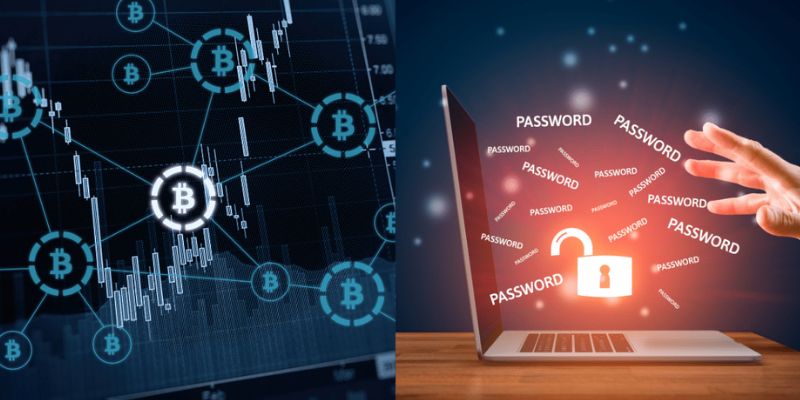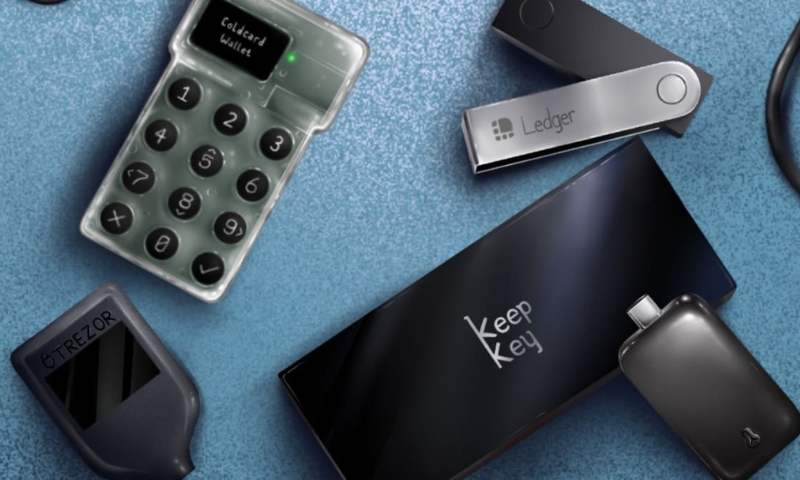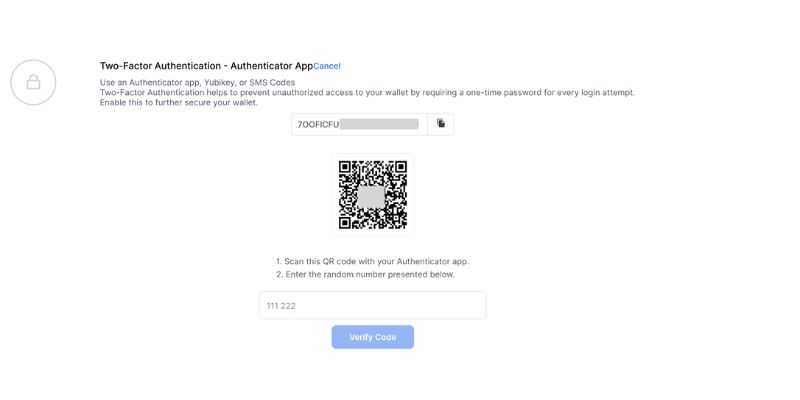Best practices for crypto wallet security are not just about picking the right storage – it’s the bedrock of your digital currency’s safety. We carry our lives in our wallets: cash, cards, a sprinkle of loose change. But what about our crypto? Here I’ll guide you through must-know tips to shield your digital treasure. From hot and cold wallets to foiling hackers and setting up solid backups, this guide doesn’t just cover the basics; it’s your crypto security bible. Dive in to lock down your assets like a pro.
Understanding the Fundamentals of Cryptocurrency Wallet Security
Hot Wallet Safety Protocols
Using a hot wallet means you’re online. Your keys are online too. That can be risky. Bad guys want in. They try hard. Keeping your wallet safe takes work. But don’t worry. The steps are simple. Let’s go through them.
First, use a strong password. Forget pets and birthdays. Pick random letters and numbers instead. Make it long. This makes it hard for thieves. Change it often. That keeps it fresh.
Second, you need updates. These are your wallet’s armor. They fight off hacks and bugs. Ignore them, and you’re in danger. Get each update. Make it a must-do task.
Third, watch out for phishing. This is when fake emails trick you. They look real but aren’t. They steal your info if you’re not careful. Never click on links that seem off. When in doubt, throw it out.
Lastly, backups save the day. If your device dies, a backup lets you in. If you skip backups, you risk losing everything. Think about that. It’s big. Do regular backups. Sleep better at night.
Cold Storage for Digital Currency
Now, let’s go cold. Not the weather. Your wallet. Cold storage is when you’re offline. It’s safer. No net means no hacks from there. You use a hardware wallet or paper.
Hardware wallets like Ledger Nano S or Trezor Model T are small devices. You plug them in to move money. Then, out they go. Back to safety. They’re strong against attacks. Just don’t lose them. That’s a big problem.
Paper wallets are more simple. They’re paper with your keys on them. Hide them well. Fireproof safes are good homes for them. Keep them dry and secret. Tell no one where. That’s your treasure map.
Cold storage has a drawback. It’s not fast for trading. If you trade a lot, this might bug you. Still, safety wins. Most say it’s worth the wait.
Remember, keep only a bit hot that you use. Keep the rest cold in storage.
So, that’s your start. Hot and cold. Online and off. Always safe. Always sharp. Protect your crypto. It’s precious. Treat it that way. Your future self will thank you. Keep learning, and stay safe out there.
Advanced Protective Measures for Your Crypto Assets
Multi-factor Authentication for Wallets
You know your wallet needs a lock. Crypto is the same. Use more than one lock. Here’s why. Multi-factor authentication (MFA) means several proofs before access. Like a guarded treasure. It keeps your coins safer than a simple password. With MFA, thieves need more than your password. They may need your phone or fingerprint. Something you have, know, and are. That’s the MFA trio.
For added security, pick different MFA types. It’s like having both a guard dog and a security system. You could use a code from an app plus a physical key. This means if someone gets your password, they still can’t get your coins. They would need your phone for the app code and the special key. It’s like needing both a secret handshake and a key to get into a club.
Setting up MFA takes a few extra steps, but it’s worth it. Imagine a fort with extra walls. It’s peace of mind. It’s like having a secret fort for your coins. Nobody gets in without going past all the special checks.
Encryption Methods for Wallets
Keep your coin talk secret. That’s what encryption does. It scrambles your wallet info, so it sounds like gibberish to snoops. It turns “I have 100 coins” into something like “7abX39QvZ.” No sense to prying eyes. Powerful encryption secures your wallet. It’s a shield for your digital riches.
Two keys lock and unlock your info. Public keys are like your mailbox where people can drop mail. Anyone can see it. But, only you have the key to open it. That’s your private key. Never share your private key. It opens your mailbox, your wallet, your whole castle.
Encrypt your wallet backup, too. If you have to restore your wallet, a backup helps. Like a spare key to your house. Secure it like the original. Imagine leaving your house key under a fake rock. But the rock shouts, “Key here!” Not smart. Hide your backup key well. Use encryption.
Write down your keys. Store them separate from your computer. Think fireproof and waterproof. A safe or a safety deposit box works. This way, if your computer crashes, you won’t lose your crypto. It’s not gone forever. You have a plan. Like having a map where X marks the spot of your treasure.
Remember, too, to keep your wallet software updated. New updates come with better locks, in a way. They fix weak spots. Sort of like patching up holes in your castle wall. Always be on the lookout for updates. Be the guardian of your wallet. It’s your duty.
In a world where digital pickpockets are real, taking advanced measures is key. Adding layers – MFA and encryption – guards your crypto life. Don’t wait. Act now. Your patience now can secure a fortune in the future. Treat your digital wallet like a medieval king’s treasury. Guard it with your life. Because, in the realm of crypto, it’s almost the same thing.
Preventing Unauthorized Access and Cyber Theft
Strategies to Avoid Phishing Attacks in Crypto
Phishing is a top way thieves steal your crypto. How can you stay safe? Simple: Think before you click. Don’t trust emails or links that ask for your private info. For crypto safety, always double-check the URL of the site you’re visiting. And remember, real crypto services won’t ask for your keys in an email.
Keeping your crypto safe from phishing starts with your actions. Use bookmarks for your most-used crypto sites. This helps you avoid fake sites. Also, set up a strong password. It’s your first defense. Make it long and mix letters, numbers, and symbols. Don’t use easy-to-guess passwords like “123456” or “password”. They are weak and risky.
For added security, think about using a Ledger Nano S or a Trezor Model T. They keep your keys offline. This way, hackers can’t reach them through the Internet. These devices help protect your coins even if your computer gets attacked. Plus, they are user-friendly, so beginners can use them too.
Maintaining Wallet Software Updates and Recognizing Fraudulent Apps
Keep your wallet software updated. Why? Each update fixes security holes. It adds new safety features too. If you miss an update, your wallet may be open to attack. Look for official announcements on updates from the provider. Scammers sometimes make fake apps that look real. They trick you into downloading them. If you do, they can steal your info.
Spotting fake wallet apps isn’t hard. Just check the number of downloads and the reviews in the app store. If they are new or have bad reviews, stay away. You can also visit the official website of your wallet. They usually link to their real app. Need another tip? Use trusted services for your crypto, like well-known exchanges or wallet providers. They’ve been around and are less likely to pull scams.
Secure digital wallet measures aren’t tough to follow. First, don’t share your codes. Next, use secure Internet — no free Wi-Fi when trading or checking your accounts. Free Wi-Fi can be an open door for hackers. And if you get strange emails or messages? Ignore them. Don’t open links or downloads from unknown sources. They could be traps set by thieves.
Crypto security might seem hard at first. But with these tips, you can keep your digital wallet safe. Always watch out for phishing. Keep your software up to date. And use your head before you click. Follow these steps, and you’ll make it tough for anyone to break into your crypto savings.
Cultivating Best Practices for Long-Term Crypto Wallet Management
Backup Strategies for Crypto Assets and Safe Seed Phrase Storage
You must backup your crypto wallet. This protects your coins if something goes wrong. Write down your seed phrase and store it safely. This seed phrase is a master key, so be super careful with it. Don’t just leave it lying around. Think of it as more important than cash. Put it in a locked safe, or even in a bank safety deposit box.
Physical Security of Hardware Wallets and Smart Contract Safety
Good wallet safety starts with a strong grip on the hardware. If you use a Ledger Nano S or Trezor Model T, keep it hidden like a jewel. Don’t let others see or touch it. Once it’s out of sight, it’s easier to keep safe. Always be sure to buy these from official stores or websites. This way, you won’t fall for a fake.
You might hear about something called a smart contract. These are like rules for your crypto that live on blockchain. Trust only the safest smart contracts with your wallet. They should come from well-known sources. Even then, be careful to check that smart contracts are good. Some can be traps, and it’s not always easy to tell.
Remember, you’re your own bank in crypto land. So you need to think about security all the time. It’s hard work but worth it to keep your digital coins safe!
In this article, we’ve covered the keys to keeping your cryptocurrency safe. Starting with basic wallet security, we talked about hot and cold storage and their safety protocols. We then explored high-level steps like using multi-factor authentication and encryption to protect your crypto assets further.
We looked at avoiding phishing and the importance of keeping software up-to-date to prevent unauthorized access. Lastly, we discussed backing up your assets and the physical security of hardware wallets for your peace of mind.
Here’s my final thought: Your crypto’s safety is critical. By using these practices, you’re not just protecting your digital coins; you’re safeguarding your financial future. Remember, take action, stay informed, and keep your assets secure. Stay safe out there!
Q&A :
What are the top recommendations for ensuring crypto wallet security?
To enhance the security of your crypto wallet, it’s crucial to follow several best practices. Always use strong, unique passwords and consider a password manager to keep track of them. Enable two-factor authentication (2FA) for an added layer of protection. Regularly update your wallet’s software to patch any security vulnerabilities. Keep the bulk of your assets in a secure cold wallet and only a small amount in hot wallets for transactions. Lastly, be wary of phishing attempts and never disclose your private keys or seed phrases to anyone.
How can I protect my crypto wallet from hackers?
Safeguarding your crypto wallet from hackers involves multiple security measures. Use a hardware wallet (cold storage) for large amounts of cryptocurrencies to keep them offline and out of reach from online threats. Implement strong, unique passwords combined with 2FA. Be vigilant about security updates for your wallet and any linked software or apps. Educate yourself on common phishing scams and never click on suspicious links or share your sensitive wallet information. Regular backups of your wallet can also help in case of a device failure or loss.
What is the safest type of crypto wallet to use?
The safest type of crypto wallet is generally considered to be a hardware wallet. Hardware wallets store your private keys offline, making them immune to online hacking attempts. They require physical confirmation on the device itself to make transactions, which adds an extra layer of security. Remember that even with hardware wallets, you must follow best practices, like keeping your recovery phrase in a secure location and only using the hardware wallet on secure, malware-free computers.
Are there common mistakes to avoid when securing a crypto wallet?
Yes, there are several common mistakes to avoid for optimal security of your crypto wallet. These include using weak passwords or reusing passwords across different services, neglecting to enable 2FA, failing to keep your software updated, and storing large amounts of cryptocurrencies in an online or hot wallet. Additionally, sharing your private keys or seed phrase, or falling for phishing scams can lead to the loss of your assets. Always be cautious and proactive in securing your wallet.
Is it necessary to use different crypto wallets for different purposes?
Using different crypto wallets for varying purposes can help enhance the security and management of your funds. It’s advisable to use a cold wallet for long-term storage of large amounts and a hot wallet for regular trading and transactions. Separating these wallets minimizes the risk of losing all your assets if one wallet is compromised. It also helps in organizing funds based on use-case, which can make keeping track of your portfolio and performing transactions more efficient.






